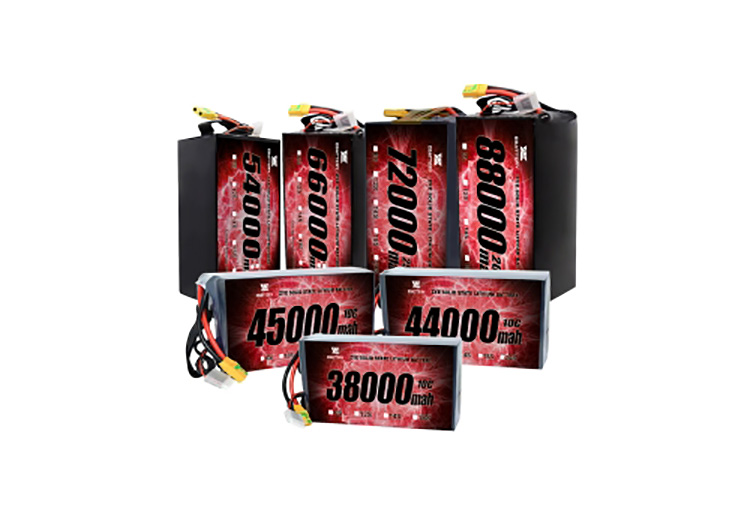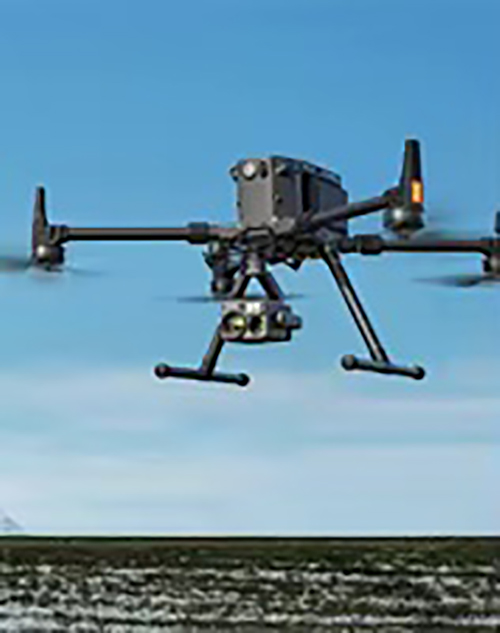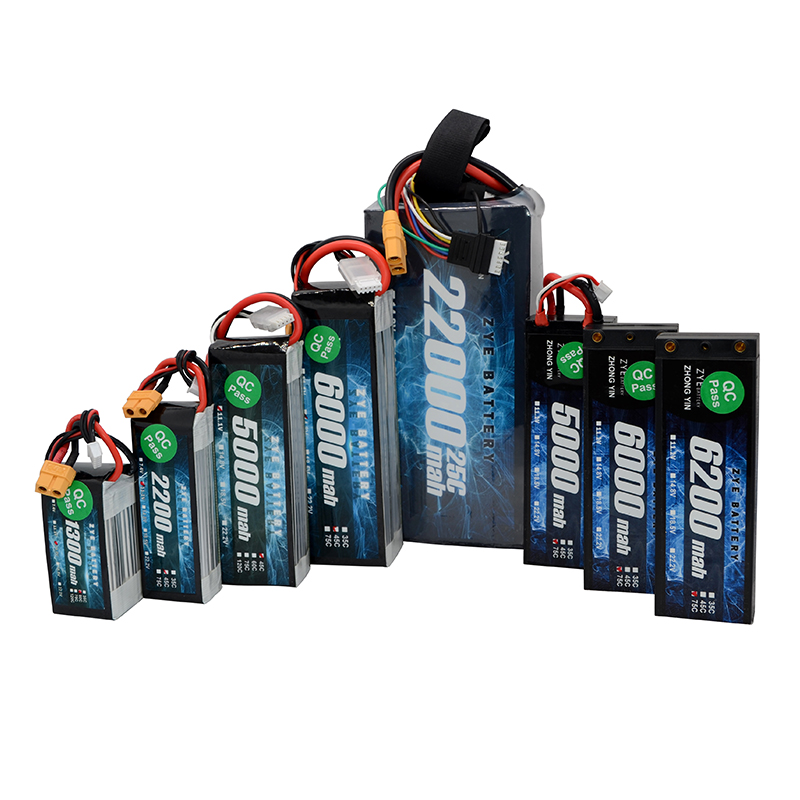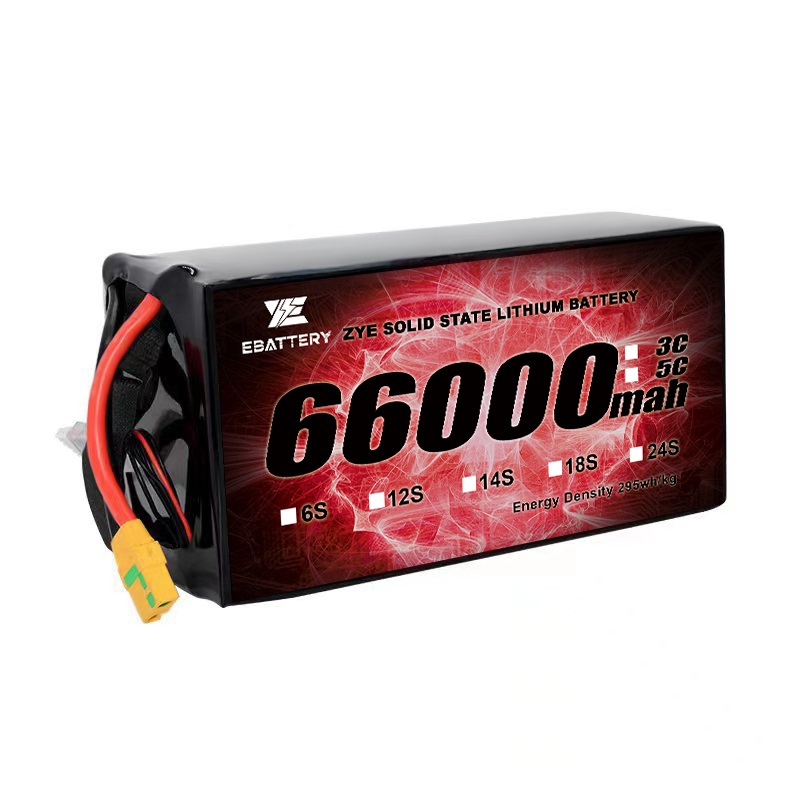How do solid-state batteries for drones improve their performance
2025-09-08
In the field of drones, battery performance remains the key bottleneck limiting their endurance, payload capacity, and environmental adaptability. Traditional lithium-ion batteries rely on liquid electrolytes, whose limitations in energy density, safety, and low-temperature stability make it difficult for drones to overcome the challenges of “short endurance, weak environmental tolerance, and high maintenance costs.”

Higher energy density directly extends endurance or increases payload capacity
Energy density is the core metric determining whether a drone can “fly longer” or “carry heavier loads.” Traditional liquid lithium-ion batteries typically offer energy densities between 200-300 Wh/kg, while mainstream solid-state batteries have surpassed 400 Wh/kg, with some laboratory prototypes reaching 600 Wh/kg.
For drones, this translates to two critical advancements:
First, under identical battery weight, flight endurance can increase by 30%-50%. For instance, a consumer-grade drone with traditional batteries typically operates for about 30 minutes, while one equipped with solid-state batteries can extend flight time to over 45 minutes, meeting demands for longer aerial photography or inspection missions.
Second, with unchanged endurance, battery weight can be significantly reduced, freeing up payload capacity for drones. Agricultural spraying drones can carry more pesticides, while logistics drones can transport heavier cargo, further expanding industry applications.
Enhanced Safety Reduces Failures and Risks
Solid-state batteries utilize solid electrolytes (such as oxides or sulfides), significantly improving thermal stability while eliminating electrolyte leakage risks. Even under external impacts or sudden temperature changes, these batteries resist thermal runaway, substantially lowering failure rates.
Puncture Test: When pierced by a sharp object, solid-state batteries exhibit only localized micro-cracks with no open flames or smoke, and surface temperatures rise by just 15°C. In contrast, conventional batteries ignite violently within 5 seconds under the same test, with temperatures soaring above 500°C.
Superior Environmental Adaptability, Breaking Temperature Constraints
Solid-state electrolytes remain unaffected by low temperatures, maintaining stable ionic conductivity across a broad range from -30°C to 80°C. High-Temperature Tolerance: A logistics drone equipped with a semi-solid-state battery operated continuously for 40 minutes at 40°C, with surface temperatures consistently below 45°C. No swelling or voltage drops occurred.
Longer Cycle Life, Reduced Long-Term Costs
Solid-state batteries feature a more stable structure, resulting in reduced electrode material degradation during charging and discharging. Their cycle life can easily exceed 1,000 cycles.
The extended lifespan of solid-state batteries translates to lower replacement frequency: Assuming one charge-discharge cycle per day, traditional batteries require replacement approximately every year, while solid-state batteries can last 3-5 years. This significantly reduces equipment maintenance costs and enhances operational cost-effectiveness.
Expanded Safety Boundaries: From Single-Point Protection to System Redundancy
Solid-state battery safety extends beyond individual cells through enhanced system integration:
Multi-layered Physical Protection: Encapsulated in biaxially oriented polyamide terephthalate (BOPA) film, solid-state batteries offer three times the impact resistance of traditional aluminum-plastic film. They withstand 50J of impact energy (equivalent to a drone colliding with an obstacle at 10m/s) without rupture.
Intelligent Management System: The integrated BMS (Battery Management System) enables cell-level voltage balancing. If a cell experiences abnormal temperature rise, the BMS disconnects its charge/discharge circuit within 0.1 seconds, preventing fault propagation.
If flight duration is your top priority, ZYE's custom drone batteries prioritize weight reduction while maximizing capacity. Our high-energy-density technology ensures extended flight times without compromising endurance or reliability.
ZYE's custom drone batteries deliver high discharge rates. They provide explosive power without overheating, enabling your drone to achieve remarkable speeds and execute dynamic maneuvers with precision and reliability.

Conclusion
Solid-state batteries enhance drone safety through a triple breakthrough: material innovation (solid-state electrolytes), structural optimization (packaging technology), and intelligent management (BMS systems). From lab data to real-world applications, solid-state batteries demonstrate overwhelming safety advantages over traditional batteries—whether in high-temperature stability, low-temperature reliability, or resistance to impact and aging.
As technology matures and costs decrease, solid-state batteries will become the “ultimate safety net” for drone flight, propelling the industry toward more complex and hazardous application scenarios.
























































